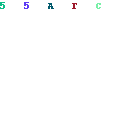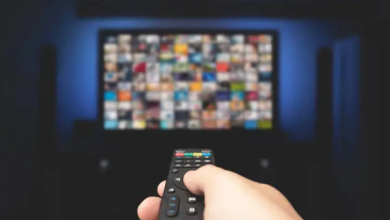Cable TV and Digital TV: What is the Difference?

Do you love watching TV? If yes, have you ever wondered what distinguishes cable TV from digital TV? You might have also heard terms like analog TV, digital cable, or over-the-air TV. What do they all mean and how do they affect your viewing experience?
In this guide, we’ll explore the differences between digital and cable TV. Let’s dive in!
Cable TV vs. Digital TV: The Basics
Cable television is a service that transmits television signals through cables, either copper or optical fiber. Most cable TV like Xfinity TV services let you choose from multiple channel and package combinations for a set monthly charge. To hook up your TV to the cable network, you’ll also need to rent or purchase a cable box or a digital converter.
Instead of using analog transmissions to transmit television signals, digital TV uses digital signals. Over-the-air (OTA) transmission, cable transmission, the internet, and satellite transmission are all viable options for digital signal transmission. In addition to having more channels and functions, the picture and sound quality of a digital TV set are superior to those of an analog one.
Cable TV/Analog TV vs. Digital TV
Digital television, the newest and most cutting-edge type of television service, transmits both video and audio data via digital signals. Bits of information (digital signals) only have two possible states, either 0 or 1. In the 1990s, digital television was launched, and by 2009, it had replaced analog broadcasts as the norm.
Transmission quality and efficiency are the primary distinguishing factors between analog and digital television. The picture and sound quality of an analog TV can suffer from interference, noise, and distortion. The visual and sound quality of a digital TV set may be enhanced by its increased robustness against distortion, noise, and interference.
Cable vs. Satellite vs. Internet vs. OTA
As we mentioned earlier, digital TV signals can be transmitted through different methods, such as cable, satellite, internet, or over-the-air (OTA). Each method has its own pros and cons that you should consider before choosing your TV service.
1. What is Cable?
Digital television signals can be transmitted over coaxial or fiber optic connections. Channels and bundles can be tailored to your preferences and financial situation. Cable’s steady and reliable service is unaffected by factors like geography or climate. Cable, on the other hand, can be costly and necessitates the use of ancillary devices like a digital adapter or cable box. Some buildings and neighborhoods may also lack access to cable.
2. What is a Satellite?
Satellites orbiting the Earth are used to deliver digital TV signals through satellites. There is a wide selection of channels available to you, from the highest tier to general, regional, and local programming. Satellite provides high-quality sound and pictures, especially in HD. However, satellites can be expensive and require extra equipment like a receiver or a satellite dish. Satellites can also have signal problems due to physical obstructions or weather conditions.
3. What is OTA?
An antenna is used to deliver digital TV signals through OTA. You can pick up free broadcast signals from local stations. You can access a limited number of channels, mostly local entertainment, weather, sports, and news channels. OTA provides high-quality sound and pictures in HD without any contracts or monthly fees.
However, OTA can be affected by your distance from the broadcast tower, location, buildings, terrain, etc., which can affect the availability and reception of the service.
4. What is Internet?
Digital television transmissions are transmitted through the internet. Content is available for streaming on a wide range of devices, including tablets, smartphones, PCs, smart TVs, etc., in either real-time or on demand. The Internet’s portability and adaptability make it possible to view whatever you want, whenever you want. The consistency and quality of your internet, however, may be contingent on the bandwidth and speed at which you access it. Problems with the Internet’s interoperability with certain operating systems or gadgets are also possible.
How to Choose the Best TV Service for You
Here are some factors that you should consider before making your decision:
1. How to get in your Budget
How much are you willing to spend on your TV service? Compare the prices and fees of different providers and packages and see what fits your budget. Remember to include the costs of equipment, installation, taxes, etc.
2. How Much Channels You Need
What kind of channels and features do you want to watch on your TV? Choose a provider and a package that offers the channels and features that you are interested in. You can also check the channel lineup and the EPG of each provider and package to see what they offer.
3. Best Service in your Area
Where do you live and what kind of TV service is available in your area? Check the coverage and availability of different providers and methods in your location. You can also test the signal strength and quality of each method in your location.
4. Provider wise preferences you enjoy
What kind of TV service do you prefer and enjoy? Choose a provider and a method that suits your personal preferences and tastes.
Final Thoughts
Different from one another, cable and digital TV services each have their own set of pros and cons. Your TV provider options will vary based on your financial situation, viewing habits, and geographical region. Before settling on a service or technique, you should weigh their relative costs, channels, features, availability, quality, and reliability.



